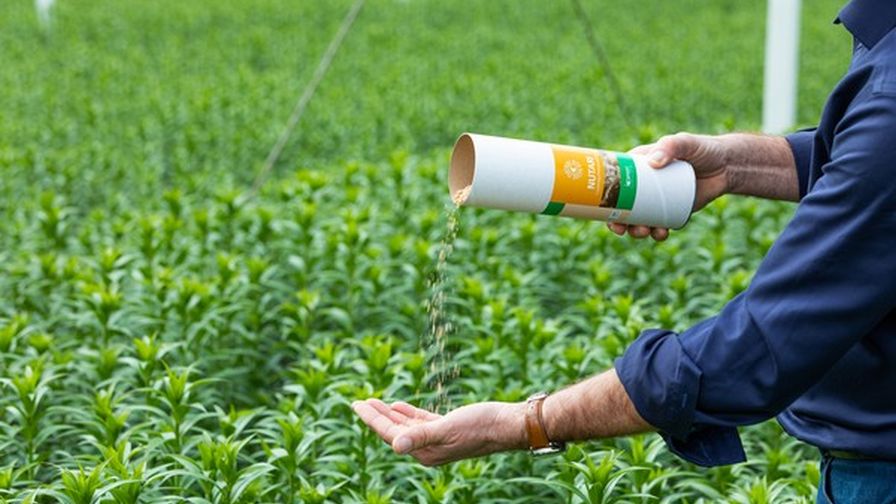How Supplemental Feeding of Predatory Mites Keeps Populations High
 Supplementary feeding of predatory mites is critical at certain times of the growing season, especially when the natural enemy is released into a crop where it does not find enough food, whether pollen or pest. To compensate for this temporary lack of food and to keep predatory mite populations stable throughout the crop cycle, Koppert Biological Systems recommends the use of Nutari, supplementary feed containing the prey mite Carpoglyphus lactis.
Supplementary feeding of predatory mites is critical at certain times of the growing season, especially when the natural enemy is released into a crop where it does not find enough food, whether pollen or pest. To compensate for this temporary lack of food and to keep predatory mite populations stable throughout the crop cycle, Koppert Biological Systems recommends the use of Nutari, supplementary feed containing the prey mite Carpoglyphus lactis.
Supplemental feeding with Nutari gives a boost to the mite population, with rapid increases of up to 500%. This increase ensures a more stable presence of natural enemies, accelerating the installation process of predatory mites and, in general, reinforcing the effectiveness of biological pest control.
The use of Nutari is especially recommended for generalist phytoseiid predators living on leaves, including: Amblyseius swirskii, Amblyseius andersoni, Neoseiulus californicus, Neoseiulus cucumeris, and Transeius montdorensis.
Nutari is applied manually or with a blower gun on the upper leaves of the plant. The application of the prey mite Carpoglyphus lactis should be done one week after the release date of the predatory mites, with repetitions every two weeks, or depending on the situation of the crops.
The supplementary feeding strategy with Nutari has yielded excellent results in greenhouse vegetable crops, such as cucumbers and zucchini, making the Amblyseius swirskii more effective. Nutari is also gaining a strong presence in ornamental crops.









